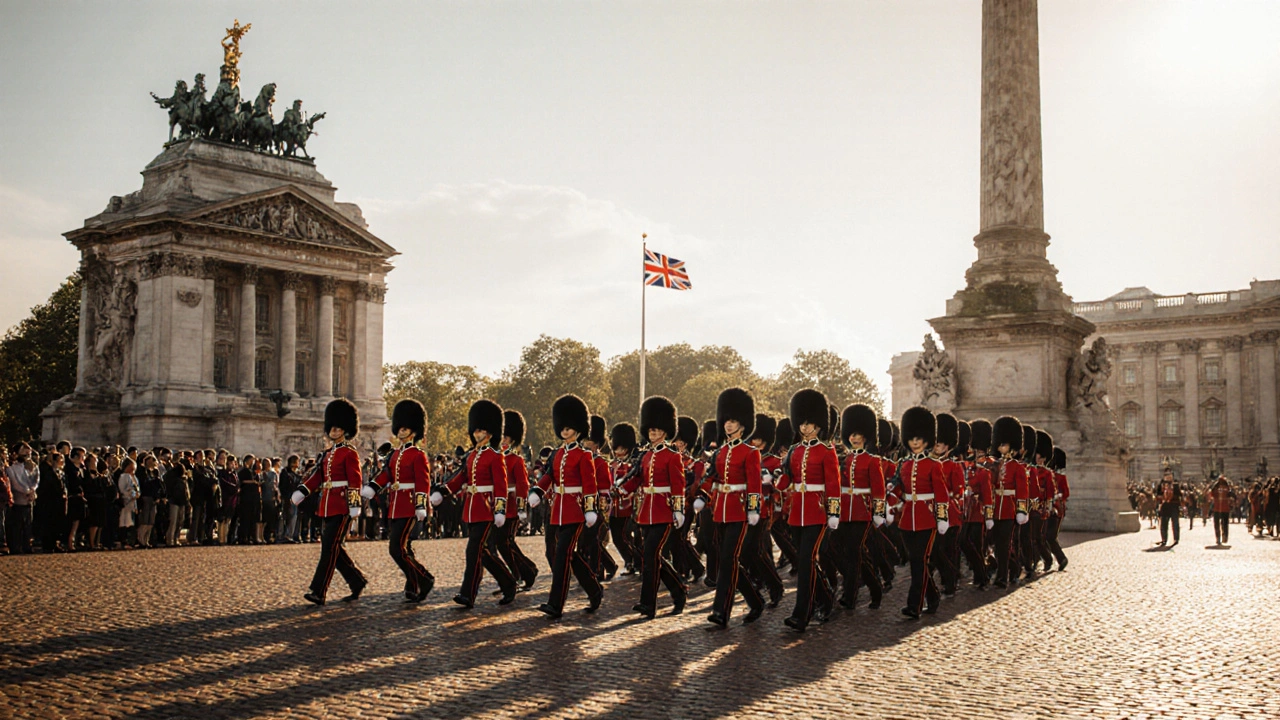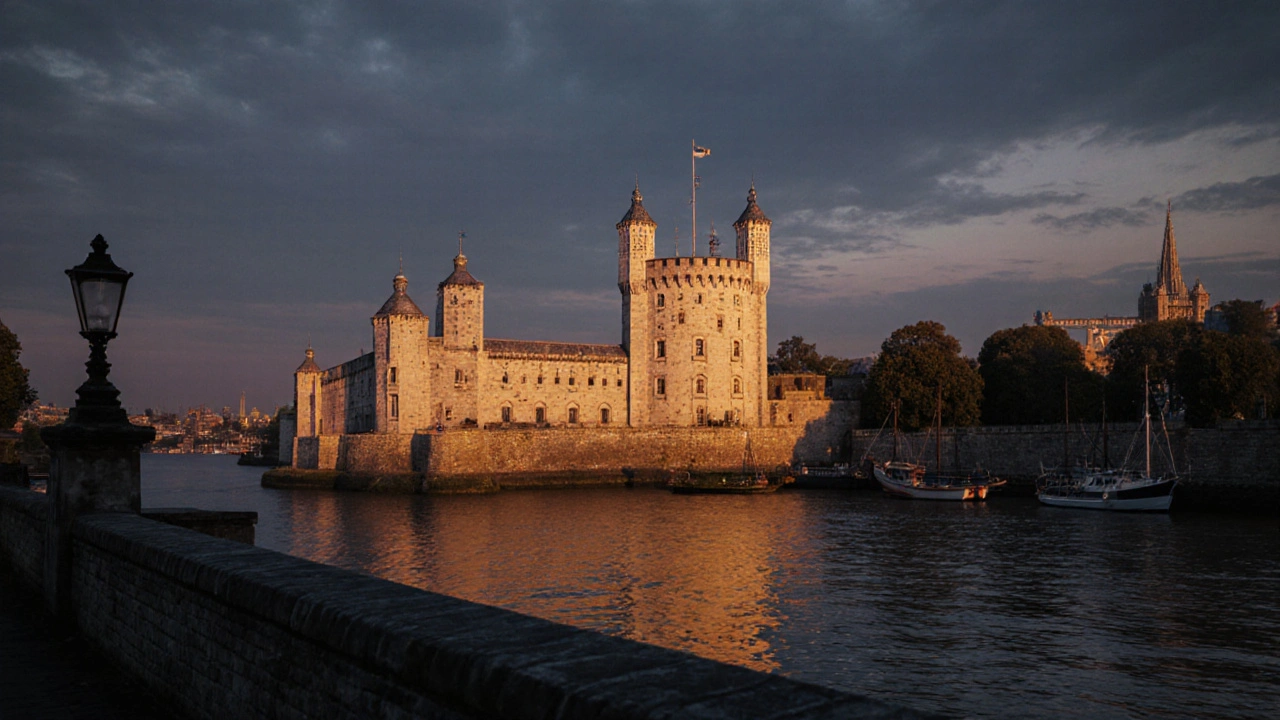Buckingham Palace: Exploring London's Royal Landmark and Its Legacy
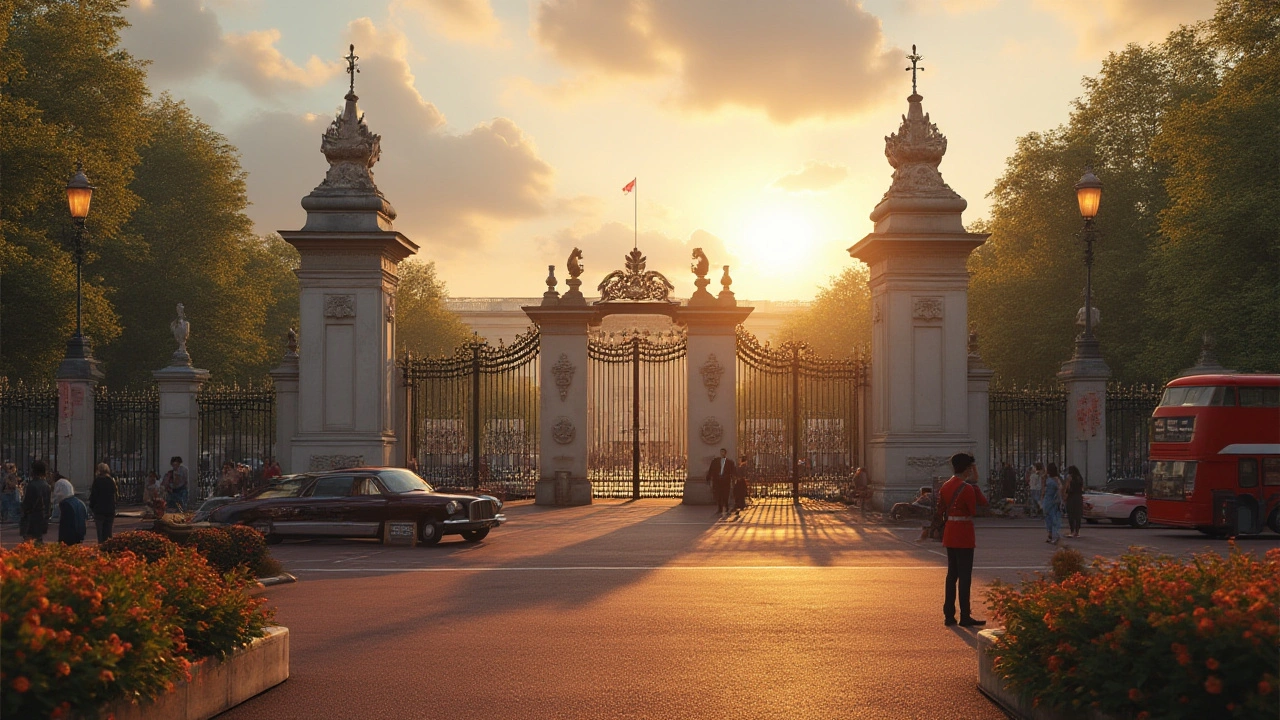
On any casual stroll through central London, it’s impossible to ignore Buckingham Palace. Tucked just behind Green Park’s rustling trees and shoulder to shoulder with the traffic of The Mall, this landmark grabs attention like few others. You can spot selfie sticks clustered around Victoria Memorial, or hear tour groups marvel at its gilded gates. But beneath the postcard view, Buckingham Palace stands as much more than a royal residence—it's the epicenter of London’s living history, a place stitched into the city’s culture and its everyday street rhythm.
Stone, Marble, and Memory: Inside London's Most Famous Palace
Everyone recognizes the grand cream façade with its rigid columns, but how many Londoners know how it came to stand here? The palace actually started off as Buckingham House, built in 1703 for the Duke of Buckingham. George III scooped it up in 1761—for a cool £21,000—and gave it to Queen Charlotte as a snug family home. The transformation from cozy residence to dazzling palace happened layer by layer. By 1837, when Queen Victoria moved in, the building took its current name and became the ultimate seat of royal power. Over the years, architects like John Nash and Edward Blore put their stamp on it. If you walk past today, try to count the 775 rooms inside. There are 19 stately rooms for royal occasions, 188 bedrooms, and more than 70 bathrooms (seriously, imagine the cleaning rota for that).
For Londoners, the palace’s stony grandeur is matched only by its consistency. Since the reign of Victoria, it’s been more than a landmark; it's practically a local neighbor. The flags fluttering on the rooftop tell a silent story—spot the Royal Standard flying? That means the monarch is home, right now, somewhere behind those hundred windows. Here’s a quirky detail: the palace’s balcony only started hosting public appearances in 1851, when Queen Victoria popped out for the Great Exhibition. Since then, it’s become the stage for everything from wartime morale rallies to the rowdiest Trooping the Colour cheers. Even if you roll your eyes at the crowds in June, there’s no denying the thrill of spotting a Windsor wave in real life.
Buckingham Palace is seriously intertwined with British traditions. Londoners know it’s where you spot the famous Changing the Guard—the city’s oldest bit of street theatre, and a must-see if you’re guiding friends or family. This ceremony, with its scarlet tunics and the unmistakable notes from the Guards’ band, happens almost daily in summer (less frequently in winter), drawing both global tourists and savvy locals hunting for the best pavement vantage points. If you want a prime view without the crowds, try to sneak up via Constitution Hill, or angle yourself on Spur Road opposite the Queen Victoria Memorial. And don’t forget those ‘secret’ local tips: head for a snack at the nearby St. James’s Park Café afterwards—it’s a classic.
Of course, the palace isn’t all about tradition and spectacle. During WWII, it took serious hits from German bombs, twice while King George VI and Queen Elizabeth were inside. They counted themselves lucky and said it gave them more solidarity with Londoners enduring the Blitz. Today, if you look closely at the palace’s eastern wing, the evidence of repairs is still visible—a silent tribute to the resilience of both monarchy and city. It makes Buckingham Palace not just a symbol of luxury or power, but a genuine part of London’s own history of surviving and thriving under pressure.
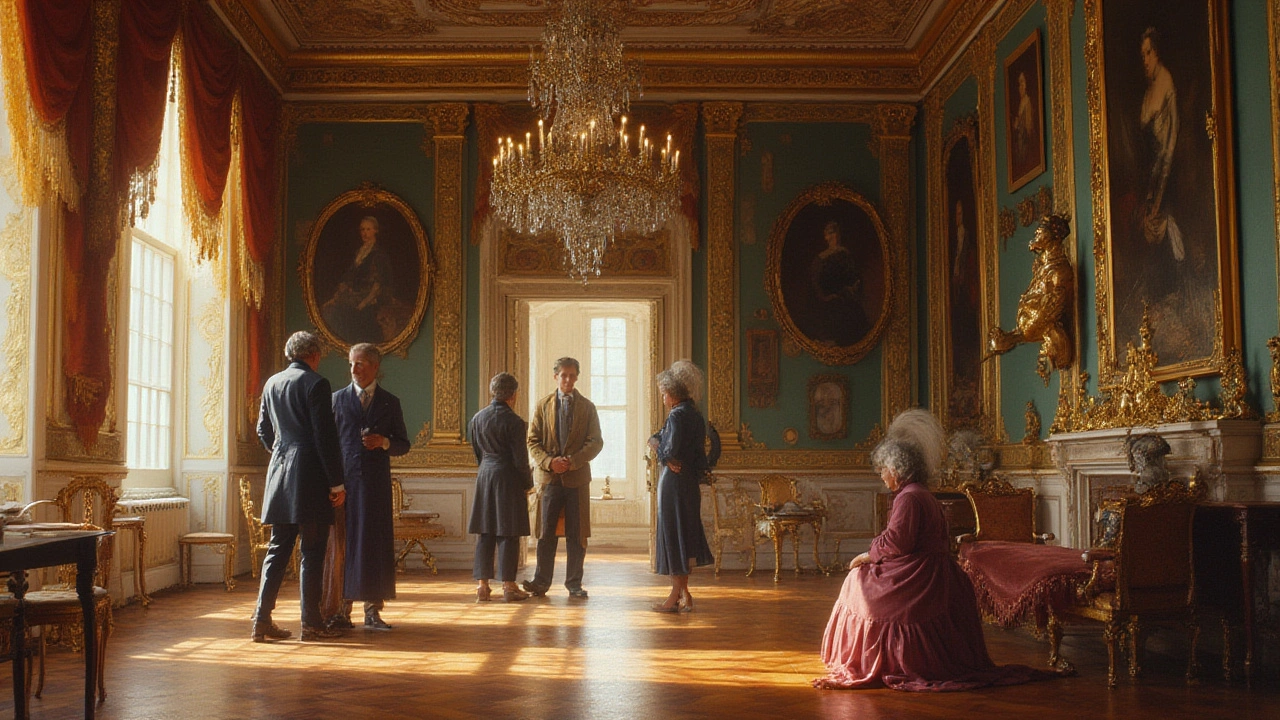
Beyond the Gates: Local Life, London Events, and Royal Rituals
Step away from the selfie squads, and you’ll see that Buckingham Palace isn’t just a background for tourists. It’s woven into the fabric of London living. On sunny days, cyclists crisscross The Mall and Green Park, while joggers loop past Canadian Gates, barely glancing up at the palace on their daily circuit. Since most Londoners can’t exactly pop round for tea with Charles, the best way to get close is the seasonal palace tours. Every summer from late July to September, the State Rooms open their doors to the public. The catch? Tickets sell out fast—locals know to book as soon as dates are announced by Royal Collection Trust. This year, exclusive highlights include a behind-the-scenes peek at the Throne Room and a chance to gawk at royal masterpieces from Vermeer to Canaletto.
Then there are the big London events where Buckingham Palace takes center stage. Take Trooping the Colour, London’s grandest annual military parade. Every June, it marks the monarch’s official birthday—months after their actual birthday, because, well, British weather. Streams of locals pack The Mall, Union Jacks in hand, eager to spot scarlet-coated cavalry and carriages rolling up towards the gates. The buzz spills into St. James’s Park and the buzzing pubs of nearby Victoria by lunchtime, giving Londoners and expats an annual excuse to celebrate royal spectacle with mates over pints and picnics.
But the palace isn’t all pomp and parades. For many Londoners, it’s the place where national moods play out. Big weddings, like William and Kate in 2011, draw cheer crowds all the way to Hyde Park. And when heartbreak hits—a king’s death or a royal mishap—floral tributes and handwritten notes blanket the fences within hours. The sense of public ritual is uniquely British, blending the personal with the national. Even the big red London buses swing round the palace daily, so it’s likely you pass it on your commute and barely notice, until the city comes together in these shared moments.
Public access to hidden palace spaces became a thing after the Windsor fire in 1992. Before then, only insiders saw the gilded ceilings, massive chandeliers, and secret staff tunnels linking offices and kitchens. A tip for locals: the garden, which stretches to 39 acres, is London’s largest private garden. From April, beekeepers quietly tend royal hives, and if you’re lucky, you can actually buy a pot of Buckingham Palace honey from Royal Collection Trust shops. And no London landmark would be complete without its own souvenirs—skip the tacky hats and treat yourself to a palace-themed Fortnum & Mason biscuit tin for the real Londoner touch.
Security is as tight as you’d expect. More than 800 staff work inside, from buttoned-up footmen to chefs prepping daily menus. In typical British style, the palace has secret (sort of) hideaways, like the palace post office and even its own ATM tucked away for royal use only. And yes, there are kittens wandering the royal kitchens—my own cat Luna would fit right in chasing the palace mice, apparently a tradition dating back to Queen Victoria’s terriers patrolling the halls.
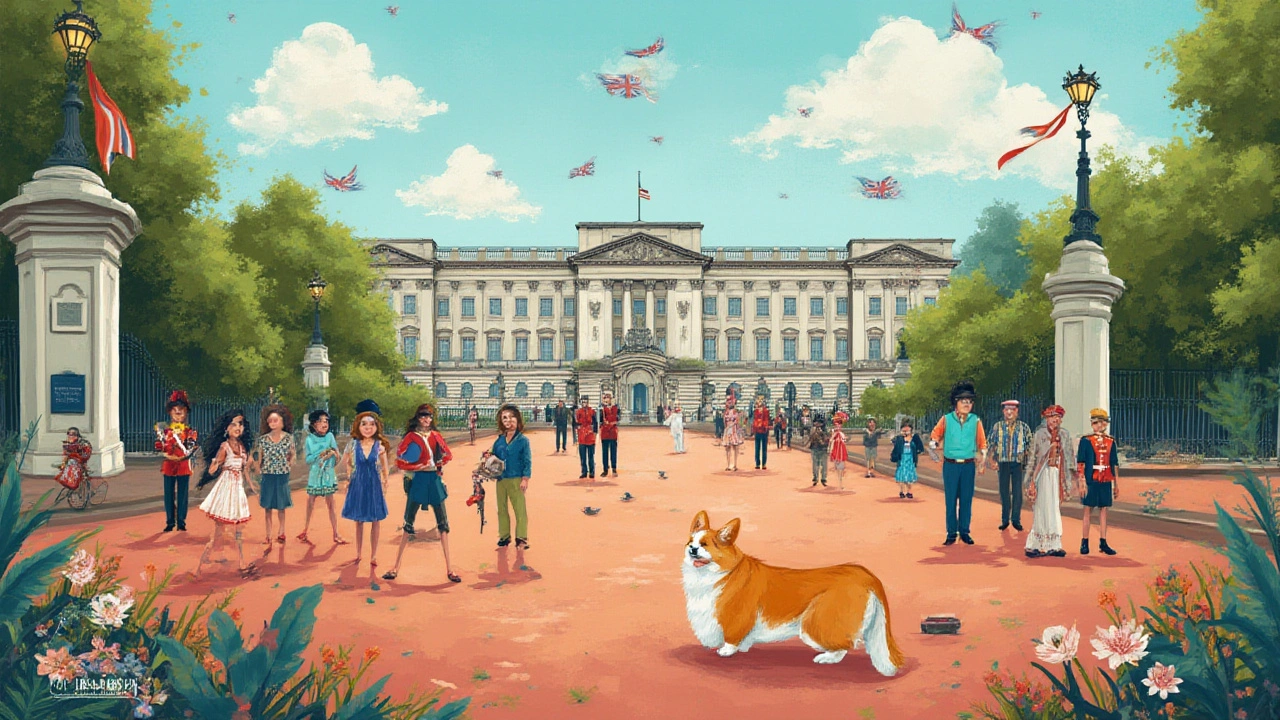
How the Queen's Legacy Shapes Modern London
You can measure modern London’s pulse by its relationship to the palace. It serves as a backdrop for street protest and celebration, from anti-war rallies to Royal Jubilee street parties. During the Platinum Jubilee, the city was blanketed in bunting, with shops from Harrods to tiny newsagents decked out in royal memorabilia. For many London locals, the palace is a kind of national living room. The Queen herself used to say that the palace wasn’t a home so much as ‘an office’ of monarchy—the place duties get carried out, but also the nucleus for people to come together in times of joy or struggle.
In 2023, when renovations kicked off (a cool £369 million project), Londoners debated it endlessly on talk radio and in their WhatsApp groups. But it’s fair to say the palace always finds ways to blend tradition with a touch of modern flair. Solar panels and a wildlife-friendly garden show the royal family’s efforts at going green. Eco-conscious locals nod approvingly at biodiversity projects, with the palace’s meadow attracting rare butterflies and birds. Not the first image that comes to mind, I know, but it gives a fresh perspective on the ancient walls—living history adapting to shifting London values.
It’s not just about royalty, either. For Londoners from every background, Buckingham Palace is a reference point—a place to meet after a gig at Apollo Victoria, or the starting line for charity runs like the London Marathon. Grab a well-brewed coffee at GAIL’s in Belgravia, watch the morning sun catch on the palace gates, and you’ll feel the weight of history in the air. Nearby galleries buzz with school trips and after-work art lovers, tying the Queen’s legacy to today’s vibrant cultural life. It’s also common to spot TV crews filming bits for shows, given the palace’s popularity as a backdrop—Netflix’s "The Crown" made the area even busier, and more than one actor has been seen ducking into St. James’s Park for a quick costume change.
If you’re new in London, don’t fall for the old myth that locals are too busy to care about the palace. Every Remembrance Sunday, hundreds come together for quiet reflection at the Cenotaph before drifting toward the palace gates. It’s a constant thread in city life, whether you grew up nearby or moved here last week. The palace is less frozen-in-time than most suppose; it's a living, breathing part of the city. There’s even talk of future state rooms becoming more accessible for school tours and community projects, blending the lines further between old-world royalty and everyday London life.
Buckingham Palace packs in centuries of ritual and transformation, but at its heart, it’s a London local: noisy, layered, a mix of the grand and the everyday. The next time you pass, don’t just snap a photo—instead, take a moment to stand under those iconic gates and feel the weight (and the buzz) of the city’s royal legacy wrapping around you. Trust me, Luna would agree, this palace may be made of stone, but its story is always alive.
